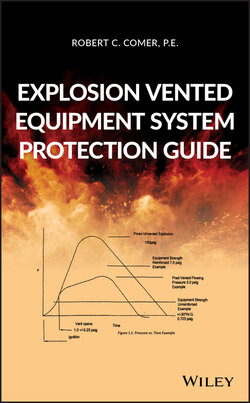Читать книгу Explosion Vented Equipment System Protection Guide - Robert C. Comer - Страница 12
Оглавление
How to Use This Book
There are two parts to this book. Part I provides the structural analysis and design for reinforcing of dust handling equipment and explosion relief ducting to prevent a catastrophic failure of the equipment during a dust explosion. Part II provides the analysis of dust handling equipment to determine the size of the explosion relief burst element and the explosion relief flowing pressure (PRed) based on the process dust explosion characteristics and geometry of the equipment.
Existing in‐house dust collection systems or new proposed equipment: If the existing or new equipment has been certified by the manufacturer for the allowable safe operating positive pressure on the drawings or in the specifications, it must be determined from the manufacturer, the design criteria that was used (% of yield or ultimate stress). If 2/3 of the 0.2% yield strength was not used as the limiting stress, the equipment does not comply with NFPA 68 (2013) “Standards on Explosion Protection by Deflagration Venting.” Part 1 of this book will provide the guidance and structural analysis to ensure that the equipment complies.
If the equipment has been designed to be explosion vented and has an explosion vent built‐in or proposed, there must have been an explosion venting analysis performed specific for the process dust being handled and geometry of the system. If an analysis is provided with the resultant explosion flowing pressure (PRed), then go to Part 1 directly to ensure the integrity of the system. If the manufacturer does not provide the analysis, Part 2 of this book will provide the guidance and analysis to size the explosion relief burst element, ducting and to calculate the explosion flowing pressure (PRed) before accessing Part 1 to ensure that the system is structurally sound and safely vented.
